-
Posts
4,744 -
Joined
-
Last visited
-
Days Won
119
Content Type
Profiles
Forums
Resource Library
Events
Gallery
Blogs
Store
Community Map
Posts posted by Mayner
-
-
David Franks the IE Chief Executive signalled a change in thinking towards freight including a cheap and cheerful re-opening of Foynes and a interest in competing for the Biomass traffic. Significantly spoke about substantially increasing train lengths and better scheduling of freight trains to avoid crossing on single lines.
A reduction in freight rates by operating longer less frequent 80TEU overnight train may be more attractive than a daily 36TEU train for shippers like IWT. However investment would be required to increase terminal capacity and critical passing loops, there is little to be gained in running an 80TEU train if you cannot fit it in a terminal or yard
In most Western Countries the rail infrastructure owner and local authorities often co-fund investment in improving line capacity with Port Companies and shippers funding terminal facilities and private sidings.
A good example is our local freight line where capacity improvements now allow 100TEU trains increased traffic as a result of increased competition between ports
.http://www.kiwirail.co.nz/news/140/129/Further-investment-in-busy-rail-line-between-Hamilton-and-Tauranga.html
Even local government and haulage companies building rail terminals https://www.nzta.govt.nz/about-us/news-and-media/keeping-connected/tokoroa-road-rail-terminal-opens-for-business/
-
Could end up with a similar situation to Williams in the US with a Kader takeover. Hornby by Bachmannanyone?
A takeover by Kader would make sense to eliminate a major competitor drop the Bachmann name in favour of the stronger Hornby brand and rationalise the OO range.
-
The Dublin-Enniskillen Railway of the Railway Mania era opens up some interesting possibilities a less round-about route from Dubin to Cavan than the Midland or the GNR just might have had the critical mass of passenger traffic to survive the 57 closures.
Linking with the Londonderry & Enniskillen, Derry might have developed into a port for trans-Atlantic liners like Cobh and carried heavy freight traffic for Donegal through Stabane, Had it survived long enough it could have carried cement and building products from the Quinn Cement and Glass Plants at Derrylin and Belturbet
Cavan would have been a logical junction point with the Ulster Railway main line from Belfast through Armagh and Monaghan opening up the possibility of Dublin-Cavan-Armagh-Belfast passenger service. A direct Portadown Enniskillen line would have served the fertile Clogher Valley and opened up a more direct faster Belfast-Enniskillen route than the GNR lines via Clones or Omagh
-
-
Great videos John. Pity about the soundtrack in the second one though, it would be much nicer if one could hear the 'music' from the locomotives instead.
-
The old CIE weed killing train dumped at Ballybrophy. Bogie wagons in black with white broken wheel emblem on cab. The train seems to be marshalled as it ran, with a 4w tank wagon behind the weed killing vehicles and a string of H vans for chemicals and stores.
http://jandjcottrell.zenfolio.com/p487224326/h2e392ac#h2e392ac
-
What happens when traction control fails on 1000ton Milk Train on a 1:35 gradient
Power required to haul a 30 wagon coal train through a 8.5Km Tunnel on a 1:33 grade (1:24-2:45)
-
Any more interest in this, or just myself and Kirley?
At this stage I have had enough orders to release the kit, which should be available in April
-
JHB any idea when the last goods train ran to Abbeyfeale? The last flurry of activity at Newcastlewest is well documented but nothing on the last trains to Abbeyfeale and Lisowel,
-
The late Padraig O'Cummin the MGWR historian published a series of articles on MGWR coaching and wagon stock in the 1970s
MGWR wagons were painted dark slate grey with loco and traffic coal wagons black, ballast wagons sand-beige (yellow clay) and some goods brakes mid green. Some evidence light grey used in 1924 for open box wagons.
Traffic wagons and small p.w.d trucks and hoppers used MGW + number on one plank.
Passenger train wagons, loco coal wagons and bogie rail wagons used MGWR + number
I don't know about standard gauge stock the GSR painted C&L ballast wagons sand-beige /yellow clay in the 1930
-
The type of layout really depends on whether you prefer to watch the trains going by or shunting The 3' width is very tight for an oval and virtually restricts you to Set-track 1st and 2nd radius curves rather than the 2' minimum radius recommend for Peco flexible track.
One option might be to model a small suburban station with short platforms on a double track line similar to Cork-Cobh, with the sharp curves at either end disguised by a tunnel, bridge or deep cutting. This would leave you around 6' for the station area, most Cobh line stations had a single short goods siding, several had staggered platforms which would make an interesting feature. A platform length of 2'6" to 3' X 2" width would look ok for the usual 141/181 or 001 & 2-3 coach Craven, Laminate or Park Royal. The occasional non-stop Boat Train or freight would add to the interest.
If you prefer freight stock and shunting forget the station 10'X1'6" would be more than enough for a shunting plank, loco depot or small freight yard.
-
Knock and GAA specials often involved long distance empty stock working of trains that would have otherwise been idle on weekends.
Sets that worked Mon-Sat Intercity links and Mon-Fri Suburban links would have been available for weekend specials but would have to work back to their original starting point in time to take up their regular workings on Monday mornings.
Another practice was to operate a reduced outer suburban service on a Friday afternoon and use the stock released to operate a Friday evening extra to most Intercity destinations and the Monday Early Bird services to Dublin. These sets would also be available to operate specials on Saturday and Sunday.
On a busy weekend a scratch set made up of Park Royals and Laminates off a Dublin suburban service might work a Friday evening extra to Sligo, operate an overnight ECS to Limerick or Cork to work a Saturday IRFU special to Landsdown Road and its return working, operate ECS to Wexford or Tralee to work a Sunday Knock special and return overnight to Sligo to work the Early Bird to Connolly before taking up its regular weekday suburban workings. Sometime during the weekend the time table planners had to fit in loco and stock servicing, cleaning and maintenance.
-
Looking for the unusual steam locos Italy is a good place.
The Italian Railways seem to have had the most success in getting the Franco-Costi system to work, they also had the even odder habit of building inside cylinder locomotives with the valves and valve gear on the outside https://en.wikipedia.org/wiki/FS_Class_600#/media/File:Locomotiva_RA_380.jpg
-
There's a mention of it in this months Model Rail. Pricey at £255/£265 though!
Kits/batch built models of steam locos work out a lot more expensive than rtr diesels.
A complete set of parts to build a small 4-4-0 such as the GNR U or PP from a kit will set you back at least £160, before considering labour, tools and consumables such as solder flux etc.
It will be interesting to see how these locos sell, there is likely to be a reasonable level of demand considering the success of Provincial Models range of rtr and kit built GNR wagons.
-
Interesting pics....
The middle one is described on the original caption as being taken at Kingsbridge - I don't think this is right. Looks more like Broadstone to me. Anyone?
In the 1st photo 548 has just passed under the North Circular Road on the approaches to Broadstone, the 1st vehicle is a MGWR fish van, second looks like one of the Attock bogie tri-composites, third a Pullman rest of the train probably a mix of GSR/GSWR/MGWR stock.
548 was one three Celtic (545 D5) Class 4-4-0s rebuilt in the 1920s with new frames, raised running plates and rounded cabs similar in general styling to the cattle engines.
In the second photo 544 is on the approaches Broadstone possibly with an up Sligo train with the North Circular Road Bridge in the background, The houses in Great Western Square and Villas and the works on the right.
The Connemara MGWR C Class were originally introduced for Sligo & Mayo line services from 1909 onwards,544 is one of 5 locos fitted with large superheated boilers and piston valves from 1917 onwards and classified as GSR Class D6 540-544.
The first coach looks like an ex-GSWR Corridor Coach, followed by an ex-MGWR side corridor coach in the lake and cream scheme, followed by a 6 wheeler, a bogie van and a string of non-passenger coaching stock and vans
-
The loaders would have been experienced animal handlers and skilled in loading stock into wagons and trucks, apart from the animal welfare issues the railway would have been liable for substantial claims from the owners of animals that died or were injured en-route to the boat or slaughter house.
There is the famous Irish Times report of 29 May 1893 "A consignment of six uninjured pigs, survivors of the dread crash at Camp on Monday was today received in the Cork Bacon Factory of Messrs Lunhams"
-
The extended smokebox doors were fitted when the MGWR rebuilt and superheated the Celtic & Connemara Class (GSR D5-7)4-4-0s and B & H Class (GSR J2 & J6) 0-6-0s during the WW1 period. The extending the door allowed the Cusack-Morton supeheater elements to be fitted within an existing smokebox, the cattle engines were built from new with superheaters and did not have this feature.
Rebuilt Celtic MGWR As GSR/CIE D5
Rebuilt Connemara MGWR Cs GSR D6/7
MGWR Cattle Engine F Class GSR J5
-
Photo © CIE
I have had a number of enquiries about releasing this kit.
Based on a minimum of 10 confirmed orders I can supply a body kit for $27.50 NZ (£15) plus $4.00 international postage.
The kit fold up no need for solder about 30 minutes work. I chickened out on the 3 way mechanism but the body can be posed in raised position supported by a strut.
-
[ATTACH=CONFIG]12732[/ATTACH]
[ATTACH=CONFIG]12733[/ATTACH]
[ATTACH=CONFIG]12734[/ATTACH]
The assembly is fold up no need for solder about 30 minutes work.
Based on a minimum order of 10 I can supply the Leyland Comet tipper bodies at $27.50 NZ (£15) plus $4.00 international postage.
I have tweaked the CAD work so the body can be propped in a raised position.
-
Ah Whitee, I should have read this first - you haven't been drinking the wrong stuff after all!
Like you, I ordered one of each straightaway, for as we both know, it's a modest price for a running Irish steam loco, even if not top-flight in terms of detail. When they come demanding cash, I'll ask them not to paint my UG, except in undercoat, as i obviously want it in GN black!
The use of white metal is, in truth, a slight worry - rather heavy stuff - still I don't plan to hang more than a few coaches behind the 4-4-0, but the goods engine will be expected to pull twenty of my wagons!
How many of you guys have ordered one?
Leslie
I would check with the manufacturer whether the body is whitemetal or a zinc die casting, he seems to have a reputation of being open and helpful.
Haulage power should be reasonably good with a whitemetal or diecast body, back in my BR modelling days I built a number of whitemetal steamers from DJH & Comet kits 20-30 wagons was no problem to a goods loco
-
yes that thread is consistent with what I understand that a 2% gradient is about the best you can achieve. its even worse if the gradient curves. The OP seems to be able to deny gravity here, so Im perplexed
Several full sized railways including the adhesion worked Cass Scenic Railroad in the USA at 11% or 1:9 appear to have defied gravity.
John Armstrongs Track Planning for Realistic Operation recommends 2% for general use and a maximum of 4% where the grade is an operating feature.
On the garden railway I operate on a ruling grade of 2% (1:50) over the main line and 3.1% 1:30 on the 18 metre branch to the storage shed.
Most of my locos will haul a reasonable train up the 3% the main issue is the risk of damage to stock if a coupling fails and a train runs back from the summit.
-
The guy in the second photo reminds me of 'Doyle' from The Professionals! CI5 to ESB?
Many years ago we had a robbery on a London construction site. The security guard who was not the brightest was approached by two men who introduced themselves as Detective Inspectors Bodie and Doyle, produced Warrant Cards, advised the guard that they were on an undercover operation, and instructed him not to leave his hut or contact control until end of shift.
The thieves had a busy and productive night removing ovens, hobs, fridges and washing machines from about 20 completed apartments, not sure if the Met caught up with the perpetrators, but the time and date of the encounter with Bodie and Doyle was recorded in the security guards patrol log book.
-
I think the layout would be more convincing as a mountain railway in a German or continental setting than British outline where the railways tended to take the line of least resistance and loops and spirals to gain height are virtually un-known.
German locos and stock tend to be higher quality and are probably a better investment than British Outline. Like OO & HO there is also the little matter that British N Gauge models are made to a larger scale than American and Continental models.
While a number of companies produce rtr models in OO no Irish rtr models are currently available.
-
More loading, this time at Killorglin interestingly there seems to be a chalked destination to the right of the doors.

Looks suspiciously like L Sullivan wonder have they chalked up the name of the buyer/dealer on the wagon? This would make more sense in an era when cattle were bought by a large number of individual dealers rather than a handful of large meat companies
Before the marts fairs like Puck, Ballinasloe, Loughrea and Roscommon could generate upwards of 100 wagons in 4 or 5 special trains. Many loading banks were long enough to load a train of 25-30 wagons minimising the need to shunt loaded wagons and risk of injury to livestock.
.png.c363cdf5c3fb7955cd92a55eb6dbbae0.png)

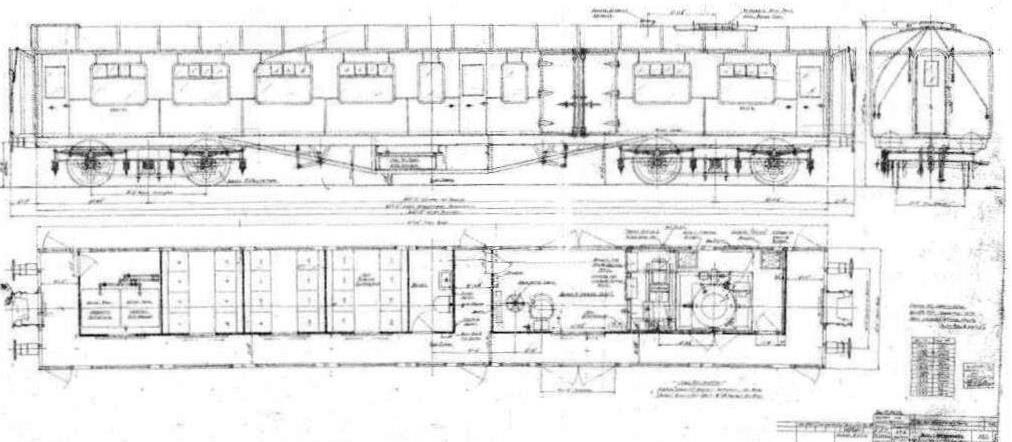
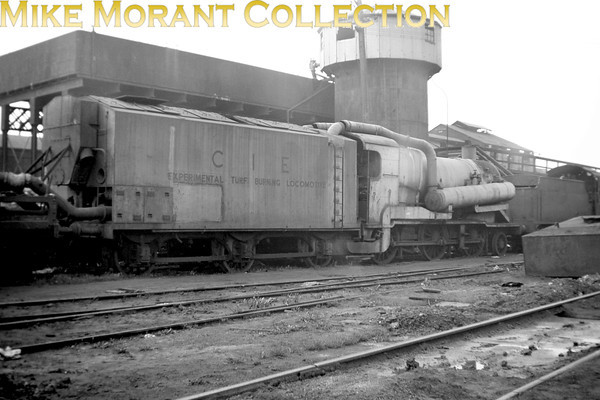
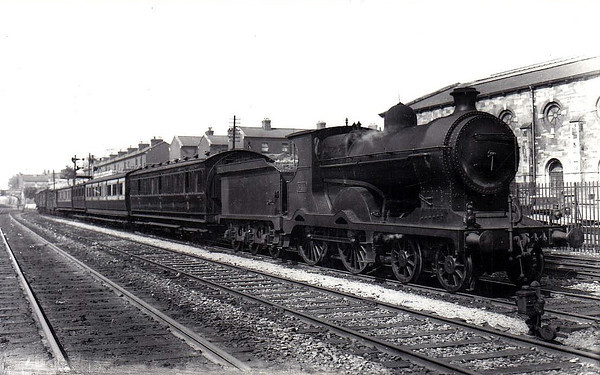
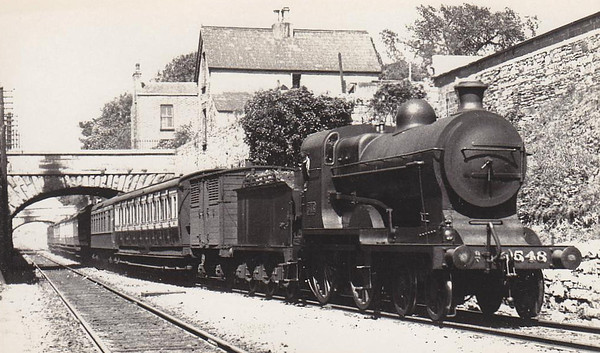
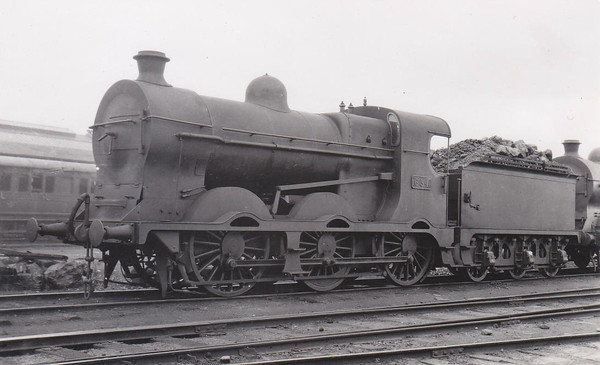
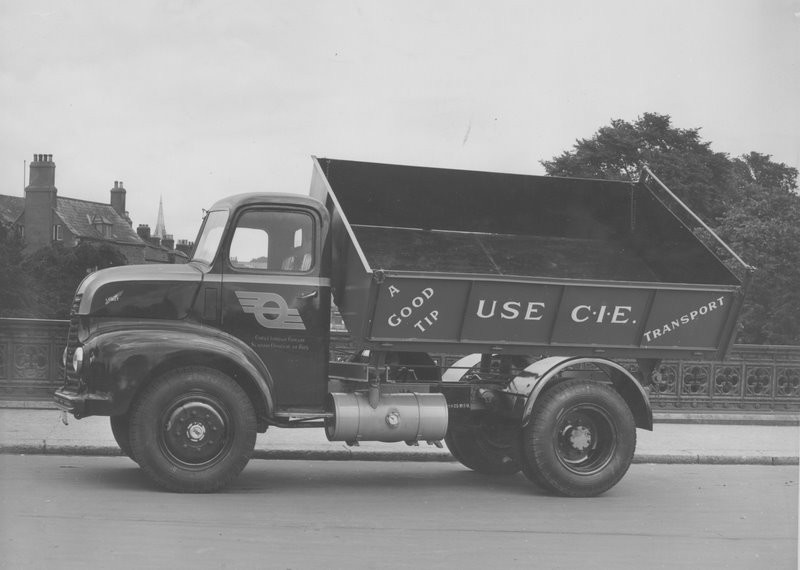

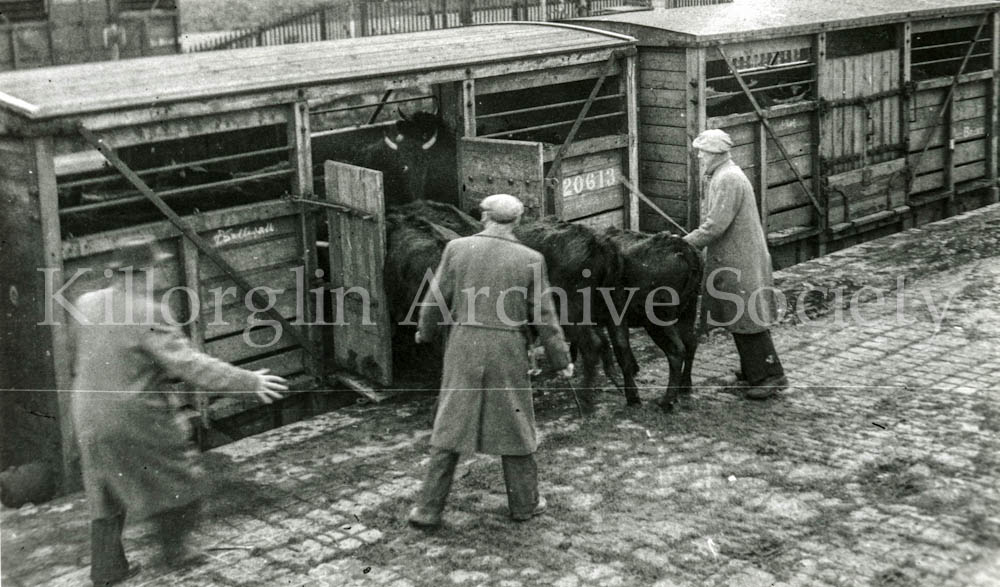
London toy fair (hornby)
in News
Posted
Cold Brrr.......... we lived in a classical Dublin 1930s 3 bed semi, my grandmother loved the fresh air with all the windows wide open even on a winters day, kept warm by the kitchen fire, paraffin and later Super-Ser bottle gas heaters in the living room and hall, only installed central heating when we had two wages in the house when I started working in the late 70s.
Although a grandfather had was a GSR driver the railways were seen as a thing of the past and CIE a dirty word in our family, with my parents never using rail after experiences of cold, dirty trains breaking down on journeys to family funerals and weddings in the West.
Maybe my interest in model railways was a form of rebellion and something my parents hoped I would grow out of when after months of negotiations I selected my first proper train set a Triang-Hornby "South African Goods" at the age of 12 or 13. It took an other year of saving up to buy a second hand Trix E2 locomotive and a Triang CKD coach, a point and some extra track.
As a kid what inspired me to model railways was the trains in the Triang-Hornby and Trix catalogues and later in model railway magazines as railways had little or no relevance in many parts of Dublin and were very much out of sight out of mind.
I suppose the lesson is that a small percentage of children will go against the norm and develop an interest in model trains, or become a dweeb or geek, than take up athletics or team sport.